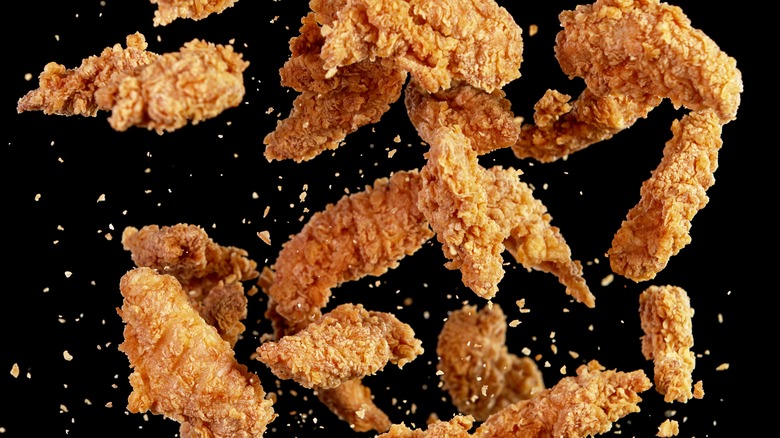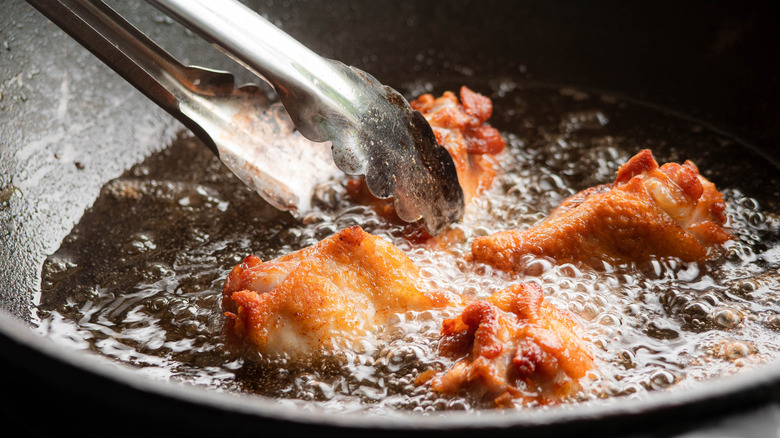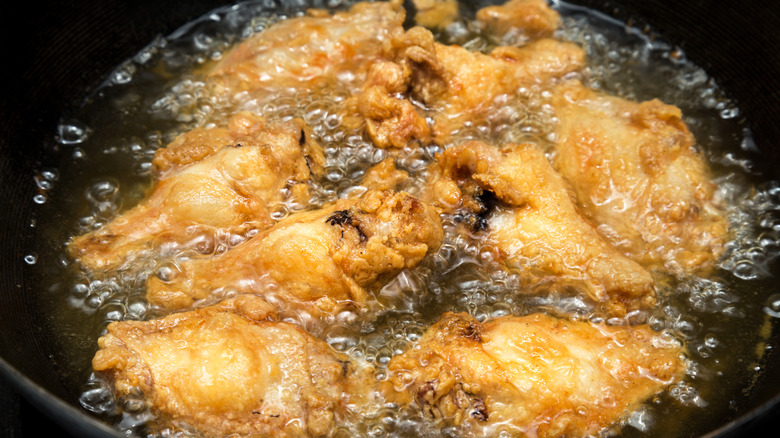The Tip You Need To Perfectly Cook Every Piece Of Fried Chicken
It's the simple things in life that tend to be the best, and that same logic applies to food, too. Basics, done well, can be life-changing. Fried chicken, for example, is a comforting food for many and is not very difficult to whip up when the craving hits. Golden brown and lightly crunchy is the perfect pairing for a juicy and tender piece of chicken. And when it's hot and fresh on your plate — we can't think of anything better.
The good news is, making your own fried chicken is totally doable. If you've ever attempted to cook the dish before but came out with less than stellar results, you're not alone. Simple mistakes are easy to make and can end in disaster, leaving you a bit apprehensive to try again. But we're here with the ultimate tip to make sure your fried chicken comes out hot, crispy, and juicy every single time, so you can give it another shot without fear.
Frying your own chicken
A big mistake people make when frying chicken is having the oil too hot, or not using a thermometer and monitoring for a consistent oil temperature. Different-sized pieces of chicken can cook at different rates leading some to be just fine while others are burnt to a crisp. Ludo Lefebvre, chef and founder of the famous Ludo Bird, shared his tips with Food & Wine for the perfect piece of fried chicken every time. Once you've got all your recipe components in order (dredge the meat in cornstarch, heat the oil to 350 degrees Fahrenheit and so on) you're going to want to cook the white meat and the dark meat separately.
Why? They take different amounts of time to cook! Just like when you roast a whole chicken, you end up covering some parts, like the breasts, with foil so they don't dry out and overcook while the rest of the bird gets up to temp. The same holds true with fried chicken, those dark pieces are going to take a bit longer to cook. If you cook them simultaneously with white meat, the white meat ends up dried out and overdone while the dark meat is barely ready to eat. Cooking the two separately will ensure perfectly crispy pieces.
The difference between light and dark meat
Besides the obvious appearance, what is the actual difference between white meat and dark meat? White meat, because it's leaner, tends to be slightly drier, though it can still be juicy when cooked correctly. It's also a little lower in calories and fat than dark meat, with a bit more protein (per Masterclass). White meat does tend to cook quickly, so grilling, sauteing, and frying are great options. The meat is done when all the pink has disappeared and it's left white.
Dark meat contains higher levels of nutrients like zinc, b vitamins, and iron. It also tends to be a bit juicier, because of the higher fat levels and is considered more flavorful than white meat. Masterclass states that, unlike white meat, dark meat can rarely be overcooked as these parts of the chicken need more time "to tenderize." Roasting, braising, or frying are the best cooking options for dark meat.
Both kinds of meat serve a purpose, and when we fry up chicken for a feast, it's always nice to have a combination of breast meat and drumsticks to go along with an array of tasty sides.


